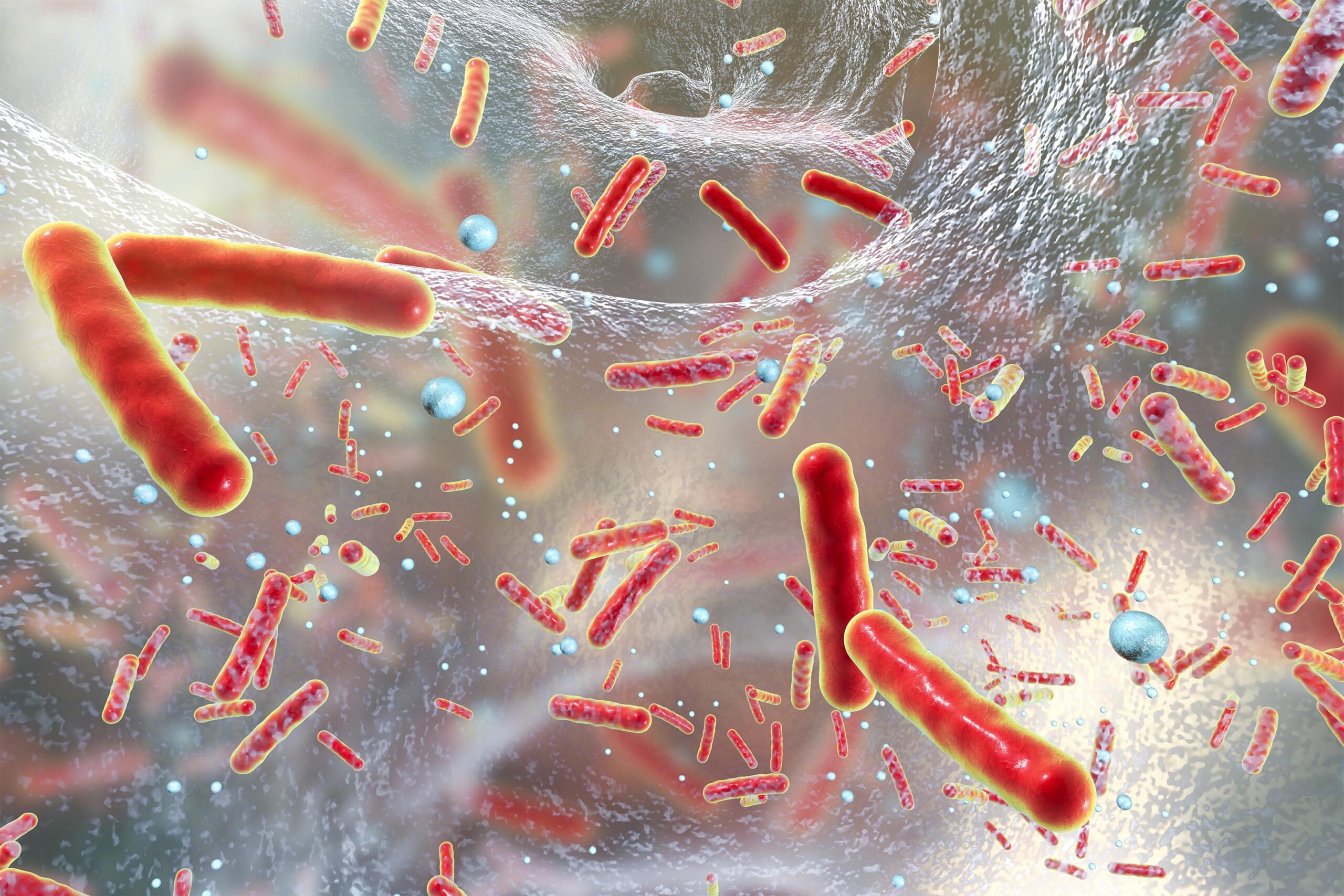• Antimicrobial peptide
• Fighting superbugs
What is already known on this topic
Scientists estimate that millions of people will die from microbial infections in the coming decades due to the emergence of superbugs—bacterial strains that are resistant to several antibiotics. This creates a need for novel and more effective antimicrobial molecules.What this research adds
In studies in cells grown in a dish, researchers characterized Ruminococcin C1, an antimicrobial molecule naturally produced by a human gut commensal. The molecule killed a broad spectrum of bacteria—including multidrug-resistant strains—without being toxic or inducing drug resistance.Conclusion
The findings suggest Ruminococcin C1 could work in combination with other antimicrobial molecules to fight pathogens and reduce the emergence of bacterial resistance.
Researchers have characterized an antimicrobial molecule produced by a human gut commensal that can fight a broad spectrum of bacteria—including multidrug-resistant strains. The findings, published in Science Advances, suggest that the molecule could be a valuable candidate for the development of new antimicrobial drugs that fight pathogens while reducing the emergence of bacterial resistance.
Scientists estimate that millions of people will die from microbial infections in the coming decades due to the emergence of superbugs—bacteria that are resistant to several antibiotics.
The gut microbiota constitutes a trove of natural antimicrobial compounds, including a class of molecules called RiPPs (ribosomally synthesized and posttranslationally modified peptides). Previous studies have tried to produce RiPPs but failed to generate them in a usable form.
So a team of researchers led by Steve Chiumento, Clarisse Roblin, and Sylvie Kieffer-Jaquinod at the University Grenoble Alpes developed a method to purify a RiPP called Ruminococcin C1 from rat stool. The team produced an active molecule identical to the one that is naturally present in the human gut.
Antimicrobial peptide
Ruminococcin C1 is produced by the gut commensal Ruminococcus gnavus, and it has a particular tridimensional structure that helps it to fight pathogens, the researchers found.
The structure of the molecule confers it activity against pathogenic Clostridia and multidrug-resistant bacterial strains, including methicillin-resistant S. aureus (MRSA), vancomycin-resistant Enterococcus faecalis, and nisin-resistant Bacillus subtilis.
Fighting superbugs
In tests done on cells grown in a dish, Ruminococcin C1 didn’t display any toxicity. The molecule didn’t affect the viability of intestinal and gastric cell lines, even at high concentrations, and it didn’t trigger the development of resistance, unlike several widely-used antibiotics.
These characteristics are key to develop new drugs against pathogens, given the rise in multidrug-resistant strains worldwide. In addition to its potential use as a treatment against superbugs, Ruminococcin C1 could be given to poultry as a probiotic to protect the animals from deadly infections, the researchers say.









